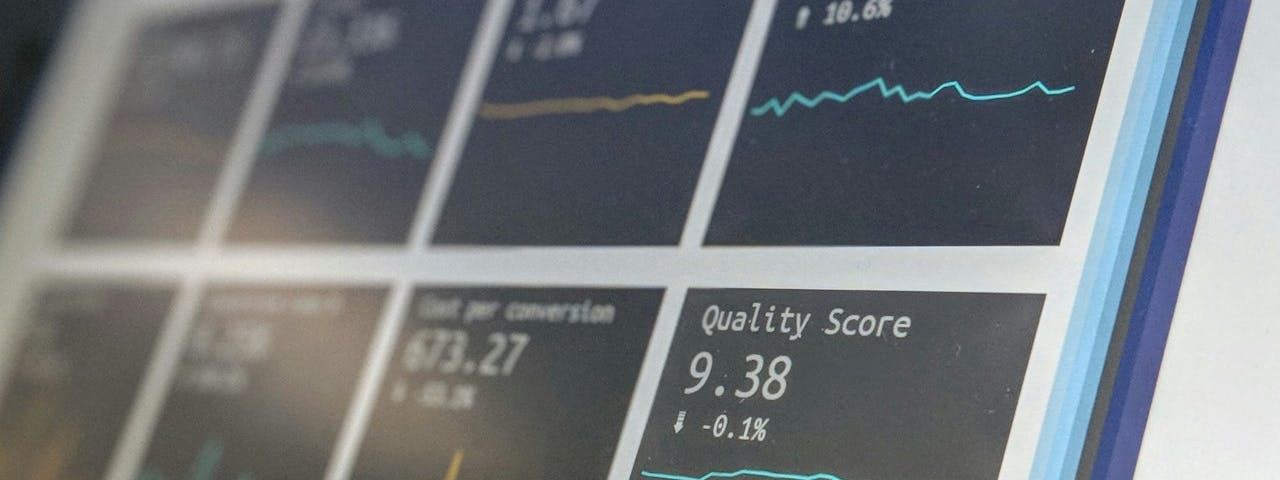Conversion-Focused Web Development: A Marketer's Guide to Turning Websites into Revenue Engines
Learn how conversion-focused web development turns your website into a growth engine. This guide for marketers details our 4-stage process. From strategy and conversion-centred design to technical build and CRO, all built to deliver measurable ROI.
Building a successful website is no longer just about creating an aesthetically pleasing user experience or sharing relevant company and product information. Today, a website is a powerful business tool designed to achieve measurable outcomes as a part of a broader marketing strategy. Or, at least it should be.
This is why choosing a web development partner should go far beyond evaluating their design portfolio or testing their technical capabilities.
The ultimate goal of conversion-focused web development, and the goal we always have as our guiding star, is turning a visitor into a customer.
We may not be marketers, but we surely do think like ones.
What does it mean? It means we understand the meaning and the importance of funnels, analytics, testing, and optimisation, and are just as focused on conversions and Return on Investment (ROI).
In this blog post, we will walk through the four key stages of developing a website that serves its purpose: strategy, design, technical foundation, and optimisation. As you will see, each stage builds directly upon the last, creating a powerful, cohesive system for growth.
Conversion-Focused Website Development
The importance of conversions cannot be overstated. By focusing on conversions in building a website, you create a measurable framework for performance, which allows you to define how successful a website really is in achieving your marketing goals. Not only that, tracking conversions provides additional space for testing and optimisation, helping you refine what works, or eliminate what doesn’t.
While not all conversions are equal, varying in value and the level of user commitment, they all impact the overall success of the website. All website conversions can be grouped into macro- and micro-conversions.
- Macro-conversions refer to the primary goals of the website (e.g. completing a purchase).
- Micro-conversions refer to the smaller actions taken by the website visitor on a path to the primary macro-conversion (e.g. adding a product to the shopping cart, or signing up for a newsletter).
It is important for you to differentiate the two so you can give equal attention to both.
If a user fails to add a product to the shopping cart, they will not complete the purchase. In other words, failure at a micro level is a direct failure at a macro level, both being essential in the overall customer journey. Understanding these metrics is the first step.
The next step is to build a strategic framework that actively guides users toward them.
Strategy Before Code
Even before coding begins, a marketing strategy needs to be developed. Officially called the Discovery Phase, its role is to produce the blueprint for the entire project. It includes aligning the goals of all the key stakeholders, conducting market and user research, as well as a technical assessment, all of which secure the ultimate project success.
While this strategic phase requires an upfront investment, it is the most effective way to de-risk the project, preventing costly redesigns and ensuring the final budget is spent on features that directly contribute to ROI.
The main idea behind these preliminary actions is that building a website is not based on assumptions. Instead, it should be a result of a detailed and strategic process that helps ensure every aspect of the website has a purpose that leads your target audience to convert.
With this strategic blueprint in hand, you can proceed to the design phase with confidence, knowing that your creative decisions will be informed by a clear purpose.
Guiding User Behaviour with Conversion-Centred Design
After completing the strategic planning phase, your website enters its next phase: design. Once again, this is not a subjective endeavour, as the principles of good web design (i.e. one that converts) don’t depend on artistic flair or graphic design expertise. While these are important, by applying the seven principles of Conversion-Centred Design (CCD), the focus shifts to psychological, technical, and strategic elements that will drive the user to complete the desired action.
These seven principles are Clarity, Focus, Direction, Urgency, Relevance, Credibility, and Simplicity.
All of these principles are rooted in understanding the customer’s mindset. Clarity ensures your message is understood instantly. Focus reduces distractions that pull users away from the goal. Direction uses visual and contextual cues to guide the eye where you want it to go. Urgency taps into timing, making action feel both easy and worthwhile. Relevance makes sure each element aligns with user intent, while Credibility builds instant trust that increases the chances of a conversion. And finally, Simplicity removes unnecessary choices, reducing hesitation at critical moments.
However, even the most psychologically compelling design will fail if it's built on a shaky technical foundation.
Your Technical Foundation
Now that you’ve prepared the strategy and worked on the design that will convert, it is time to make sure that the website works without error from a technical perspective.
When securing optimal technical performance, loading speed is critical.
Research shows that modern website visitors have no mercy towards a website lagging in speed. With constantly-growing expectations, about 40% of users will leave a website if it takes more than three seconds to load. An optimal loading speed that protects marketing ROI, reduces bounce rates and supports strong SEO performance is between one and three seconds. Slowing this down by merely one additional second potentially decreases conversion by 7%.
With mobile devices now accounting for the majority of website traffic, another thing to prioritise is responsiveness. What is more, the mobile-first design has become the preferred approach with most new websites, prioritising smaller screens. The mobile-first design puts focus on modern user behaviour, search engine expectations, as well as your performance goals.
Next to responsiveness and speed, other factors such as hosting and security cannot be overlooked, as they directly impact your users’ trust and marketing ROI. Secure hosting reduces bounce risk, while a well-structured technical setup improves SEO performance.
Once your site is technically sound, it's ready for launch. But the work isn't over; it's where the real-time learning begins.
Continuous Improvement and Optimisation
With the strategic groundwork set and a technically sound website launched, the most valuable phase begins: putting your assumptions to the test through continuous testing and optimisation.
Once your website is live, it begins to generate different extremely valuable (!) data about your visitors and the way they behave: their points of engagement, hesitation, or drop off.
This is where Conversion Rate Optimisation (CRO) comes in - a process through which you make sense of this data and use it to grow further. Using tools like heatmaps, funnel analysis, and A/B testing, you can turn data into opportunities.
Even a small lift in conversion rate can significantly impact your ROI, amplifying the results of every campaign you run. And because CRO is continuous, each improvement compounds over time, transforming your website into a living, adaptive asset that grows with your marketing goals.
Conclusion
Ultimately, building a website is not a fluke; its main advantage against competitors is neither in aestheticism nor in technical expertise as standalone disciplines. In order to have a website that converts, the approach must be guided by evidence. For marketers, this is where the real competitive edge lies: a site that actively contributes to business growth, not just online presence.
As your partners, we at Firney approach every website development project as marketers, with conversions being our guidance along the way. We believe a successful website is one that actively contributes to your business growth. That is why every step of our process is grounded in data and focused on delivering measurable results.
In the coming weeks, we’ll be publishing a deep-dive article on each of these four stages in developing a conversion-focused website. Subscribe to our newsletter and stay tuned for a detailed look into our strategic process!
And if you wish to see how your website can convert, we're just a click away.






